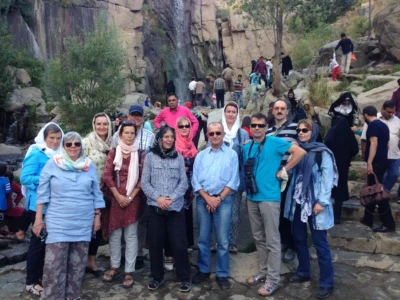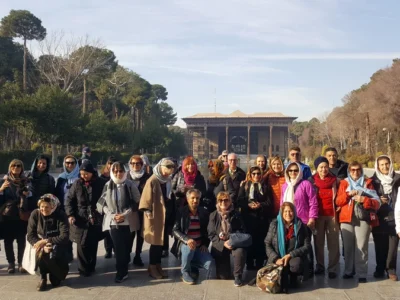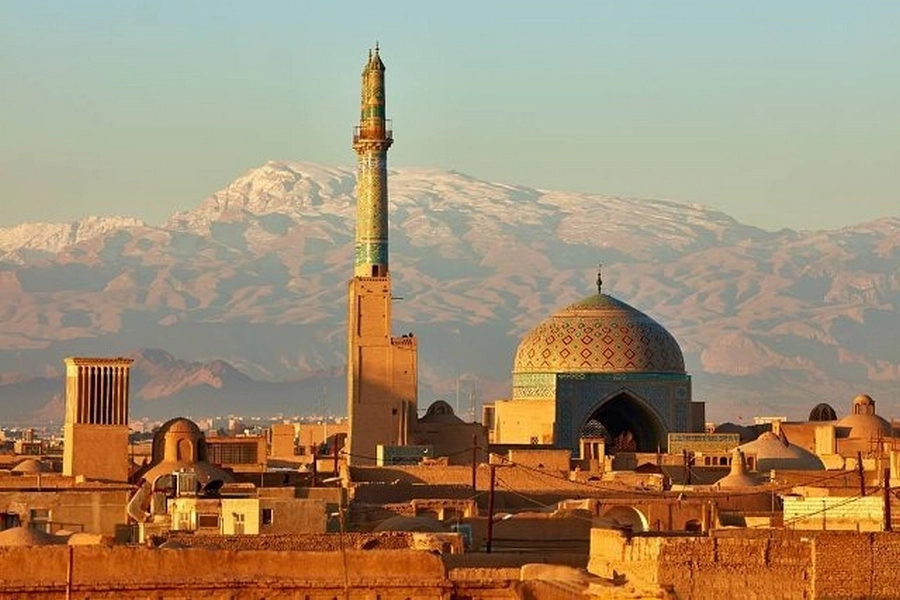YAZD
Yazd is a historic city in central Iran, in the province of Yazd. It is positioned on the eastern edge of the Dasht-e Kavir, or Great Salt Desert, and is surrounded by vast desert landscapes, rocky mountains, and oasis-like valleys. Yazd's geographical coordinates are approximately 31.8974° N latitude and 54.3561° E longitude.
The city's strategic location has made it an important center of trade, commerce, and culture throughout its history. Yazd lies along ancient trade routes, including the Silk Road, which connected Persia with the civilizations of Central Asia, China, and the Indian subcontinent. Its position at the crossroads of major transportation routes has contributed to its significance as a commercial and cultural hub in Iran.
Yazd is characterized by its arid desert climate, with hot summers, mild winters, and minimal rainfall. The city's landscape is dominated by sand dunes, salt flats, and rocky terrain, interspersed with palm groves, orchards, and agricultural fields fed by the region's ancient qanat system.
One of Yazd's most distinctive features is its historic windcatchers, or badgirs, which are tall, chimney-like structures designed to capture and channel the wind to cool buildings during hot summer months. These iconic architectural features can be seen throughout the cityscape, providing a glimpse into Yazd's traditional building techniques and environmental adaptation strategies.
Yazd has a rich and storied history that dates back thousands of years. It has been inhabited since ancient times, with evidence of human settlement dating back to the Neolithic period. The city flourished during the Islamic Golden Age as a center of trade, scholarship, and craftsmanship, attracting merchants, scholars, and artisans across the region.
Yazd's history is intertwined with the history of Zoroastrianism, one of the world's oldest monotheistic religions. The city is home to important Zoroastrian sites, including the Fire Temple and the Tower of Silence, which reflect its status as a center of Zoroastrian culture and heritage.
The population of Yazd has grown steadily over the years, driven by factors such as urbanization, economic development, and migration from rural areas. According to the latest estimates, the population of Yazd is approximately 700,000 people, making it one of the largest cities in central Iran.
Yazd is known for its diverse population, comprising various ethnicities, including Persians, Azeris, and Lurs. The city's residents are known for their hospitality, warmth, and strong sense of community, creating a welcoming atmosphere for visitors and newcomers alike.
Yazd serves as an economic hub for the region, with a diverse economy driven by sectors such as agriculture, industry, tourism, and services. The city is known for its production of textiles, carpets, ceramics, and handicrafts, which are exported to markets both domestically and internationally.
Tourism is also a major contributor to Yazd's economy, with visitors flocking to the city to explore its historic landmarks, traditional bazaars, and cultural attractions. Yazd's unique blend of ancient and modern architecture, rich history, and vibrant culture make it a popular destination for travelers seeking an authentic Persian experience.
| Languages spoken | Persian : Yazdi dialect |
|---|---|
| Currency used | Iranian Rials |
| Country name | Iran |
Culture and history
Yazd, an ancient city located in the heart of Iran's central desert region, is steeped in rich culture and history that spans thousands of years. From its origins as a center of Zoroastrianism to its role as a vibrant hub of trade, craftsmanship, and Islamic scholarship, Yazd's cultural heritage is a testament to its people's resilience, ingenuity, and creativity.
**Zoroastrian Legacy**:
Yazd is renowned as one of the oldest continuously inhabited cities in the world, with a history of over 3,000 years. It served as a center of Zoroastrianism, one of the world's oldest monotheistic religions, and remains an important pilgrimage site for faith followers.
The city's Zoroastrian heritage is evident in its architecture, traditions, and customs. Yazd is home to the Fire Temple of Zoroastrians, which houses a sacred fire that has been burning for over 1,500 years. The Tower of Silence, located on the city's outskirts, is another significant Zoroastrian site where the dead were traditionally laid out to be exposed to the elements.
**Islamic Golden Age**:
Yazd flourished as a center of Islamic scholarship, trade, and culture during the Islamic Golden Age. The city's strategic location along the Silk Road made it a vital trading hub, connecting Persia with the civilizations of Central Asia, China, and the Indian subcontinent.
Yazd's architectural heritage also flourished during this period, with the construction of mosques, madrasas, and caravanserais that showcased the finest examples of Islamic art and craftsmanship. The Jameh Mosque of Yazd, with its towering minarets and intricate tilework, is one of the city's most iconic landmarks.
**Qanat System**:
One of Yazd's most remarkable features is its ancient qanat system, a network of underground tunnels and channels that transport water from the mountains to the city and surrounding areas. The qanat system has been used for thousands of years and is a testament to ancient Persian civilizations' ingenuity and engineering prowess.
The Yazd Water Museum offers insight into the history and technology of the Qanat system, showcasing traditional tools, equipment, and techniques used to maintain and operate the underground channels.
**Modern Era**:
In the modern era, Yazd continues to be a vibrant center of culture, commerce, and craftsmanship. The city's traditional industries, such as silk weaving, carpet making, and pottery, thrive alongside modern technological developments, education, and tourism.
Yazd's cultural heritage is celebrated through various festivals, events, and initiatives that showcase the city's artistic traditions and historical legacy. Visitors can explore its historic landmarks, traditional bazaars, and Zoroastrian sites and participate in cultural activities such as music, dance, and theater.
In conclusion, Yazd's culture and history are deeply intertwined, shaping the city's identity and character over the centuries. From its ancient roots to its modern-day achievements, Yazd remains a testament to Iran's rich cultural heritage and a source of inspiration for future generations.

Tourist attractions
Yazd and its suburbs offer a wealth of attractive attractions that reflect the city's rich history, culture, and architectural heritage. Here are some of the most notable attractions:
1. **Jameh Mosque of Yazd**: This historic mosque is one of the oldest in Iran and is renowned for its stunning architecture and intricate tilework. The mosque dates back a thousand years and features a towering minaret, a beautiful courtyard, and a prayer hall adorned with colorful mosaic tiles.
2. **Amir Chakhmaq Complex**: This impressive complex is a prominent landmark in Yazd. It features a large square surrounded by a series of arched alcoves. The complex includes a mosque, a madrasa, and a bazaar and is particularly striking at night when illuminated.
3. **Windcatchers (Badgirs)**: Yazd is famous for its traditional windcatchers, or badgirs, which are tall, chimney-like structures designed to capture and channel the wind to cool buildings during hot summer months. Visitors can admire these iconic architectural features throughout the city, especially in historic neighborhoods such as Fahadan.
4. **Zoroastrian Fire Temple (Atashkadeh)**: Located in Yazd, this sacred temple is one of Iran's most critical Zoroastrian sites. It houses a perpetual flame that has been burning for over 1,500 years and is a place of pilgrimage for followers of the ancient religion.
5. **Tower of Silence (Dakhmeh)**: Situated on the outskirts of Yazd, the Tower of Silence is an ancient Zoroastrian burial site where the dead were traditionally laid out to be exposed to the elements. The site offers panoramic views of the surrounding desert landscape and provides insight into Zoroastrian burial customs.
6. **Yazd Water Museum**: This museum showcases the ancient Qanat system, a network of underground tunnels and channels used to transport water from the mountains to the city. Visitors can learn about the system's history and technology through exhibits, artifacts, and interactive displays.
7. **Dowlat Abad Garden**: This historic Persian garden is a UNESCO World Heritage Site and features lush greenery, flowing water channels, and traditional pavilions. The garden is renowned for its tall cypress trees and the tallest windcatcher in Iran, which offers panoramic views of the surrounding landscape.
8. **Kharanaq Village**: Located approximately 70 kilometers from Yazd, Kharanaq is an ancient mud-brick village that dates back over a thousand years. Visitors can explore the village's winding alleyways, historic buildings, and abandoned caravanserais, offering a glimpse into rural life in Iran's desert region.
These are just a few of the many attractions Yazd and its suburbs offer. Whether you're interested in history, culture, or architecture, there's something for everyone to explore and enjoy in this fascinating city and its surroundings.
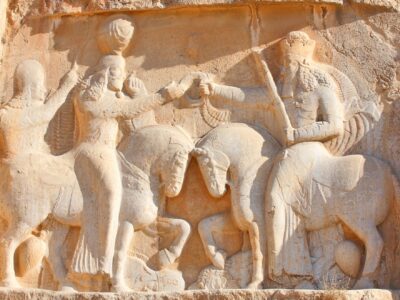
AMOUNG PERSIANS
Tehran| Hamadan| Kermanshah| Susa | Ahvaz | Shiraz | Mahan | Kerman | Yazd | IsfahanOur 15-day trip takes you across a plethora of ancient historical landmarks, a top choice for adventure travelers.
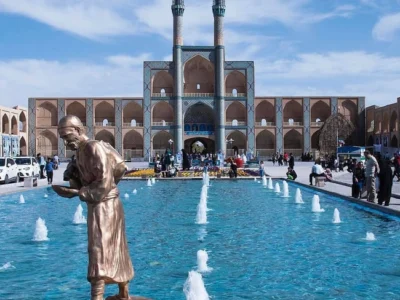
ANCIENT PERSIA
Tehran | Kashan| Naein | Yazd | IsfahanEmbark on a journey through time as you explore the prehistoric cities of Qom and Kashan, alongside the pre-Islamic marvels of Maybod, Yazd.

ANCIENT PERSIA
Tehran | Kashan| Naein | Yazd | IsfahanEmbark on a journey through time as you explore the cities of Qom and Kashan, alongside the pre-Islamic marvels of Maybod, Yazd.
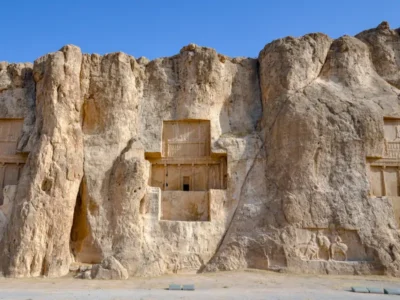
IN THE REALM OF THE PERSIANS
Tehran | Abyaneh | Isfahan | Varzaneh | Yazd | Kerman | ShirazOur 16-day trip takes you across many ancient historical landmarks and stunning landscapes, making it the top choice for adventure travelers.
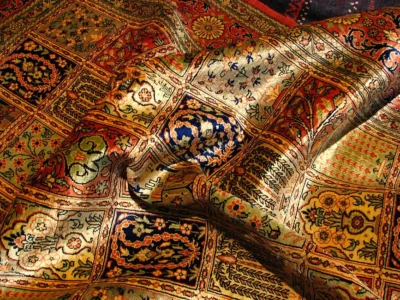
IRAN HIGHLIGHTS
Tehran | Shiraz | Yazd | Isfahan | KashanOur 8-day cultural and adventure tour takes in many of Persia's iconic highlights while uncovering different insights into the Persian lifestyle.
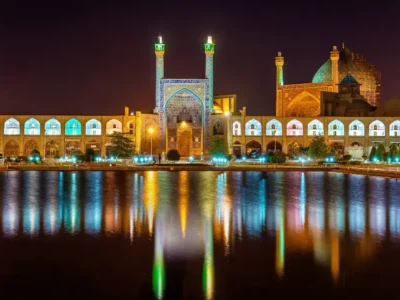
PEARLS OF PERSIA
Tehran| Isfahan| Yazd | Shiraz |Iran, once Persia, stands at the crossroads of time with a 7,000-year history, making it one of Earth's most captivating cultures.
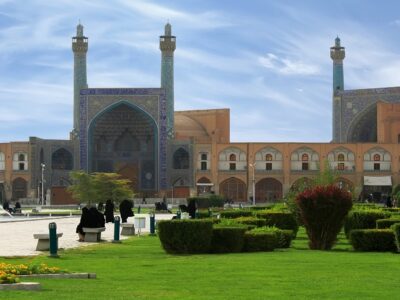
PERSIA’S GOLDEN TRIANGLE
Shiraz | Yazd | IsfahanThis seven-day trip is ideal for travelers who are short on time but wish to discover iconic landmarks of Ancient Persia.

PERSIAN CULINARY EXPLORATION
Tehran | Abyaneh | Isfahan | Varzaneh | Yazd | Kerman | ShirazOur 14-day itinerary is designed for those who wish to step back in time and feel the imperial grandeur of the ancient Persians.
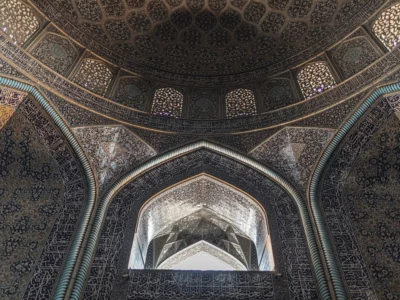
WONDERS OF PERSIA
Tehran | Abyaneh | Isfahan | Varzaneh | Yazd | Kerman | ShirazOur 14-day itinerary is designed for those who wish to step back in time and feel the imperial grandeur of the ancient Persians.
Unfortunately no accommodations were found.


